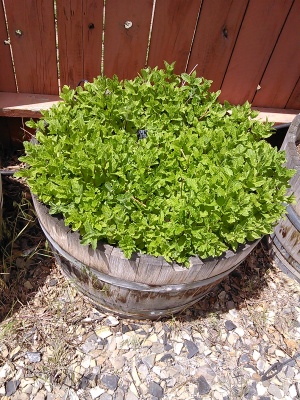LOG IN. UPLOAD PICTURES.
The Philippines has Zambo Mart to help propagate the Chavacano Language.
Difference between revisions of "Mint (Yerba Buena)"
| Line 37: | Line 37: | ||
<center>{{herbheader}}</center> | <center>{{herbheader}}</center> | ||
==News About Yerba Buena / Mint== | |||
Revision as of 00:23, 9 January 2016
Herbal Remedies and Medicinal Cures for Diseases, Ailments & Illnesses that afflict Humans and Animals
Aloe Vera •
Astragalus •
Bankoro •
Bilberry •
Bitter Gourd (Ampalaya) •
Bitter Orange •
Black Cohosh •
Cat's Claw •
Chamomile •
Chasteberry •
Coconut •
Cranberry •
Dandelion •
Echinacea •
Ephedra •
European Elder Tree •
Evening Primrose •
Fenugreek •
Feverfew •
Flaxseed •
Garlic •
Ginger •
Ginkgo •
Ginseng (Asian) •
Golden Seal •
Grape Seed •
Green Tea •
Hawthorn •
Hoodia •
Horse Chestnut •
Kava •
Lavender •
Licorice •
Malunggay Moringa Oleifera •
Milk Thistle •
Mistletoe •
Passion Flower •
Peppermint Oil •
Red Clover •
Ringworm Bush (Akapulko) – Cassia alata •
Saw Palmetto •
St. John's Wort •
Tawa Tawa •
Turmeric •
Valerian •
Yohimbe •
accept the bitter to get better
About Mint (Yerba Buena) - Clinopodium douglasii
Yerba Buena is a perennial plant of the mint family that grows up to 1 meter long. Leaves are elliptic in shape, and produces small, hairy whitish, or purplish flowers. In the Philippines, Yerba Buena is grown in high elevated areas. As medicinal plant, the parts used are leaves and stem.
Medical Uses:
- Promotes good health, if taken as tea.
- Sniffing crushed fresh leaves is effective for dizziness.
- Leaves soaked in a glass of water is used as mouthwash.
- Decoction of leaves is used for migraine, headaches, fevers, toothaches, stomach aches, muscles and joint pains, and dysmenorrhea.
- Pounded or crushed leaves is used to treat insect bites.
What other websites are saying about Mint(yerba buena)
Yerba buena or hierba buena is a name of Spanish origin used for a number of aromatic plants, most of which belong to the mint family. The Spanish name hierba buena translates as "good herb". The specific plant species regarded as yerba buena varies from region to region, depending on what grows wild in the surrounding landscape, or which species is customarily grown in local gardens. Perhaps the most common variation of this plant is spearmint (Mentha spicata). The term has been (and is currently) used to cover a number of aromatic true mints and mint relatives of the genera Satureja or Micromeria. All plants so named have medicinal properties, and some have culinary value as herbal teas or seasonings as well.
Scientific Names: Mentha arvensis Linn.
Yerba Buena is also knows as: Hierba buena (Span.), Minta (Italy), Minze (Germany), Marsh mint (English), Mint, peppermint (Engl.), Po-ho (Chin.)
Yerba buena (Clinopodium douglasii) is a rambling aromatic herb of the mint family that is known and used as herbal medicine worldwide.
Yerba Buena is a perennial plant that grows up to 1 meter in height with oblong shaped leaves with toothed margins. Flowers are hairy and the color is bluish to purplish with axillary head like whorls.
Yerba Buena are grown throughout the world from North America to Asia. The plant takes the form of a sprawling, mat-forming perennial, and is especially abundant close to the coast.
Yerba Buena is more popular for its culinary application because of its minty flavor. Used in salads and as flavor for cooking foods. Yerba buena aroma is also used for scents and fragrances.

